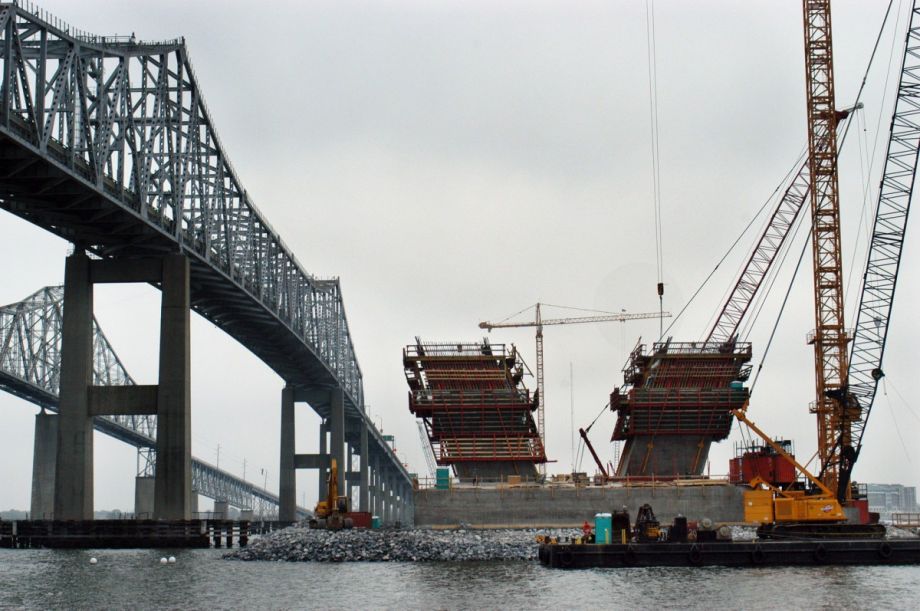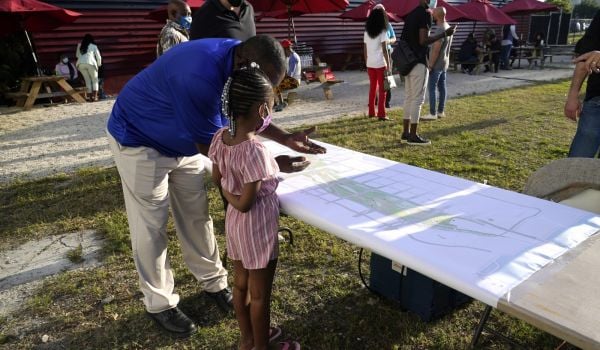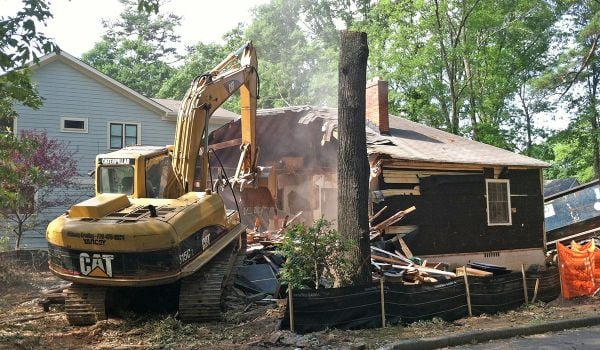Elizabeth Jenkins can easily recall blocks of the neighborhood where she grew up in North Charleston, South Carolina: Addison Street, Romney Street, Indian Street. There were churches on every corner, and children riding bicycles down Addison past old men playing checkers.
“You knew everybody on every street,” she says. “It was all a neighborhood.”
Today, Addison Street spans a half block before it’s abruptly cut off by Interstate 26. The highway began construction in Columbia, South Carolina, in 1957, and ended in Charleston in 1969.
Jenkins remembers her mother crying upon learning the interstate would displace their family. Hers was one of the last remaining families on the block as they tried to find a new home. The Jenkins family settled on Cedar Street on Charleston’s East Side, an area that itself had recently been torn apart from the construction of the Cooper River Bridge.
Then it very nearly happened again. Replacing the Cooper River Bridge, the Arthur Ravenel Jr. Bridge construction dominated the East Side from 2001 and 2005.
“The bridge came through,” as Jenkins puts it. “I’m glad my mom didn’t live to see it all happening again.”
Jenkins feared she would be displaced. While her home ultimately remained, she came to feel the $700 million project was a lost opportunity for community investment. “We didn’t have good representation … they wanted the bridge at any cost,” she says. “Nobody wanted to listen to the community.”
The Cooper River Bridge deconstruction left huge swaths of vacant land where a neighborhood once stood. To the city, this land is an opportunity to re-knit the neighborhood and build much-needed affordable housing. To some longtime residents, it’s a painful reminder of city negligence they feel continues to this day.
The construction of the new bridge has been very good for some. Since the Ravenel Bridge opened, property values across the Charleston peninsula — which spans a mere eight square miles — have exploded. The East Side is now home to investors, new businesses, luxury development, an influx of students and wealthier residents.
“In the changes that have been made, we’ve forgot about affordable housing,” says Charleston City Council Member Robert Mitchell, who represents the area.
Latonya Gamble, president of the Eastside Community Development Corporation, says the lack of affordable housing has become the community’s main concern. “It’s almost laughable at this time,” she says. “People are being displaced daily because of affordability.”
Gamble says the Eastside Community Development Corporation isn’t large enough to facilitate affordable housing development.
Jenkins, who is president of the East Central Neighborhood Council, expressed frustration the city hasn’t given sufficient funding or resources to community groups, reminiscent of the lack of support to those displaced by 1960s infrastructure projects.
The city received $3 million from the South Carolina Department of Transportation as part of a mitigation agreement for the bridge site. In 2017, Charleston City Council approved a Cooper River Bridge Tax Increment Finance District to fund infrastructure improvements. But as the neighborhood rapidly gentrifies, long term residents wonder who these investments will actually benefit.
It doesn’t help that the site has faced a number of holdups, including a long bureaucratic process to divvy up the land, the recession, flooding concerns and environmental cleanup.
A larger issue exists across Charleston: the state’s one-size-fits-all scoring system for low income housing tax credits doesn’t work as well for the city, dealing with limited space and high land costs. A 2017 report by the Post and Courier found that the Charleston peninsula hadn’t seen a tax credit development in 15 years.
A few years ago, a proposal to build affordable housing for the East Side fell through because the developer couldn’t secure tax credit funding, according to the report. At the bridge redevelopment area, a developer backed out of affordable housing plans in late 2017 due to site complications.
Progress has been made in the past year, after the city partnered with the Bloomberg Harvard City Leadership Initiative to better address challenges with affordability, design and overall site constraints. Last summer, the Charleston Housing Authority broke ground on an affordable housing project. (The authority didn’t pursue tax credit funding or other subsidies since it would take too long.) Last month, the city released an RFP for more affordable housing.
“The goal is to use housing as a catalyst to reknit that neighborhood together,” says Geona Shaw Johnson, director of Charleston’s Department of Housing & Community Development.
Shaw Johnson envisions walking and bike paths connecting mixed-income affordable housing. Though the East Side is made up largely of single-family homes, environmental concerns mean the site will be developed with multi-family housing. “We’ve worked hard … to ensure that, aesthetically, apartments will look like they belong in the neighborhood,” she says.
Other efforts are playing out in the neighborhood. Mitchell says he’s increasingly working with developers to include affordable units in new buildings. Not far from the bridge site, the Star Gospel Mission is developing a nine-home campus that will hold transitional and workforce housing.
“This is a huge need, and it’s only growing,” says Pastor William Christian, at the helm of Star Gospel Mission. “The campus will be full, and will stay full.”
“The real crisis in the East Side neighborhood is gentrification,” Christian says, adding that it’s something of a “re-gentrification” given that the neighborhood was once mostly white.
Jenkins notes that as those white residents left the city, many homes were purchased by black Charleston residents being displaced from other places, like her family.
To her, such rapid gentrification of the East Side feels like yet another threat of displacement. “It’s been terrible, because the gentrification is only going one way,” she says. “The area is now besieged by investors who don’t give a hill of beans about this community. So here again, we as a people, are being shredded off.”

Emily Nonko is a social justice and solutions-oriented reporter based in Brooklyn, New York. She covers a range of topics for Next City, including arts and culture, housing, movement building and transit.
Follow Emily .(JavaScript must be enabled to view this email address)
















